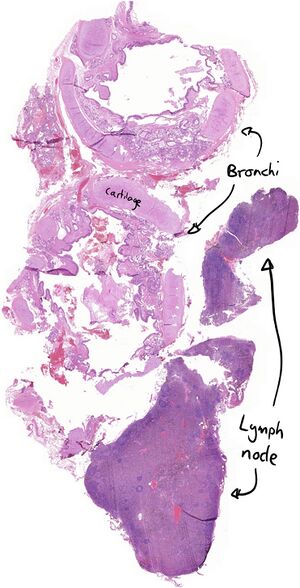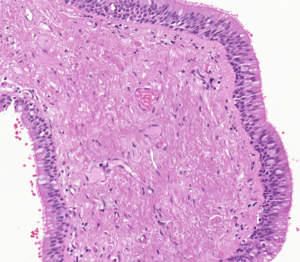33. Squamous metaplasia in bronchus
Staining: HE
Organ: Bronchi, lymph node
Description:
We can see two cuts of a bronchus and two pieces of a lymph node.
The top bronchus is the best, so we’ll use that. Cartilage and submucosal glands are present. In a small part of the bronchus is the epithelium stratified squamous.
The lymph nodes show anthracosis.
Diagnosis: Squamous metaplasia in bronchus
Causes:
- Smoking
Theory:
Cartilage and submucosal glands show us that we’re looking at a bronchus and not a bronchiolus.
Most of the epithelial is healthy, respiratory epithelium with goblet cells. Only a small part of the epithelium shows stratified non-keratinizing squamous epithelial metaplasia.
This type of metaplasia is characteristic in smokers and is a precancerous or preneoplastic lesion toward lung cancer.





